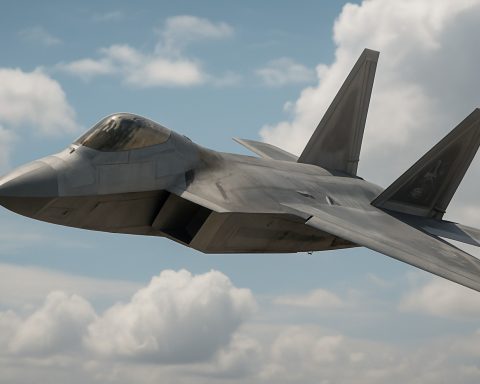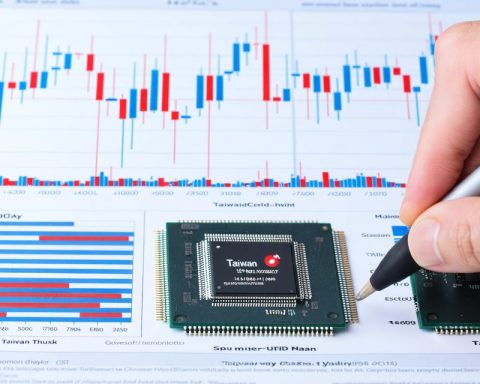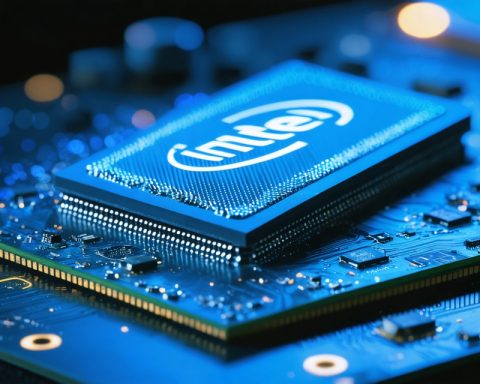- Nvidia’s stock faced volatility in early 2025 due to market disruptions and new US chip restrictions.
- Despite uncertainties, a $500 billion investment in domestic AI infrastructure presents substantial growth opportunities for Nvidia.
- Chinese AI start-up DeepSeek introduced the R1 model with reportedly low development costs, unsettling Nvidia’s investors.
- Industry analysis suggests DeepSeek’s claimed low expenditures might be misleading, raising questions about actual investments.
- For investors, Nvidia’s current dip offers an attractive entry point following high valuations.
- Historical trends like the Jevons Paradox suggest increased demand for Nvidia’s efficient chips, even if competitors emerge.
- Significant investments from companies like Meta and Microsoft signal sustained demand for AI infrastructure and chips.
- Investors are encouraged to view Nvidia’s temporary setbacks as strategic opportunities amid broader market shifts.
Amid a turbulent start to 2025, Nvidia’s stock has tripped over a series of market disruptions. The Biden administration’s sweeping chip restrictions seemed daunting, yet the proposed $500 billion investment into domestic AI infrastructure offered a glimmer of hope for Nvidia. But be not fooled—storms gathered anew as Nvidia’s fortunes reeled again.
An unexpected tempest came from the east. DeepSeek, a brash Chinese AI start-up, unveiled their R1 reasoning model with much fanfare, claiming it was crafted on a paltry $5.6 million. This revelation spooked investors, sending Nvidia’s market value into an alarming nosedive. However, an industry analysis suggests these figures might be smoke and mirrors. DeepSeek’s glossed-over expenditures paint a broader, more sophisticated picture—a $1.6 billion investment cloaked behind euphemisms of a thrifty model.
In this storm of information and misinformation, Nvidia’s stock tumbled—yet therein lies a ray of opportunity for discerning investors. With valuations now seemingly more approachable, Nvidia promises three compelling reasons to seize shares amid this decline.
First, this dip offers an attractive entry point following lofty valuations. Next, even if DeepSeek’s claims hold water, historical precedents like the Jevons Paradox suggest increased efficiency leads to higher demand, ensuring a continued appetite for Nvidia’s chips. Finally, a mountainous $500 billion AI infrastructure surge, combined with resolved commitments from tech behemoths like Meta and Microsoft, will inevitably bolster demand.
Thus, what appears as Nvidia’s stumble could very well be a misstep worth benefiting from. Let seasoned investors eye this dip as a chance to glance past shadows and seize new opportunities amid shifting tides.
Why Nvidia Stock’s Setback Could Be the Perfect Opportunity for Savvy Investors
How-To Steps & Life Hacks
Investing in a Volatile Market
1. Conduct Thorough Research: Before investing, gather detailed information about Nvidia’s financial health, competitive landscape, and market position. Monitor industry news, updates, and financial reports.
2. Start Small: If you’re new to investing, consider starting with a small position to gain confidence before committing more funds.
3. Set Clear Goals: Define your investment time horizon and risk tolerance. Are you looking for short-term gains or long-term growth?
4. Diversify: Balance your tech investments by adding other sectors to your portfolio to minimize risks.
5. Stay Informed: Regularly review your investments and remain updated on market developments. This will help you make timely decisions.
Real-World Use Cases
AI Infrastructure Boom
– AI infrastructure is crucial for various applications such as autonomous vehicles, healthcare systems, and smart cities. Nvidia’s technology plays a significant role in building these systems, providing essential computing power and graphics processing.
Market Forecasts & Industry Trends
Chip Industry Growth
– According to Gartner, the global semiconductor market is projected to hit $600 billion by 2025. Advances in AI, IoT, and 5G are key drivers of this growth.
– Nvidia is expected to benefit from these trends, especially with growing AI applications requiring robust GPU support.
Reviews & Comparisons
Nvidia vs. Competitors
– Nvidia: Known for superior GPU technology, particularly in gaming and AI applications.
– AMD: Offers competitive pricing and solid performance but has less market share in the AI sector.
– Intel: Dominates the CPU market, working on gaining traction in GPU and integrated graphics.
Controversies & Limitations
– Chip Restrictions: The Biden administration’s chip restrictions could impact international sales but may encourage domestic innovation and production.
– Rising Competition: Companies like DeepSeek challenge Nvidia’s dominance, but sustaining long-term competition requires significant resources and expertise.
Features, Specs & Pricing
– Nvidia’s GPUs are renowned for their high performance, power efficiency, and compatibility with AI frameworks.
– Pricing varies across consumer and corporate products, typically ranging from $199 for entry-level GPUs to over $10,000 for enterprise solutions.
Security & Sustainability
– Security: Nvidia invests heavily in cybersecurity to protect data processed through its GPUs, critical in sectors like healthcare and finance.
– Sustainability: The company is committed to reducing its carbon footprint through efficient data centers and sustainable practices.
Insights & Predictions
– Short-term: Market volatility may persist, but Nvidia’s technological leadership provides a strong foundation for recovery.
– Long-term: As AI integration advances, Nvidia is well-positioned to capture market share in emerging technologies.
Pros & Cons Overview
Pros:
– Strong position in the high-growth AI market.
– Robust partnerships with tech giants.
– Innovations in GPU technology.
Cons:
– Regulatory risks due to geopolitical tensions.
– Increasing competition from new entrants.
– Market volatility impacting stock performance.
Actionable Recommendations
– Monitor Policy Changes: Watch for updates on U.S. chip policies that could impact Nvidia and other tech stocks.
– Leverage the Dip: Consider buying during market lows, but ensure it aligns with your investment goals and risk tolerance.
– Stay Tech-Savvy: Learn about AI and tech trends to better understand Nvidia’s growth potential.
Suggested Links
By analyzing market dynamics and maintaining a strategic approach, investors can turn Nvidia’s current challenges into lucrative opportunities.



















